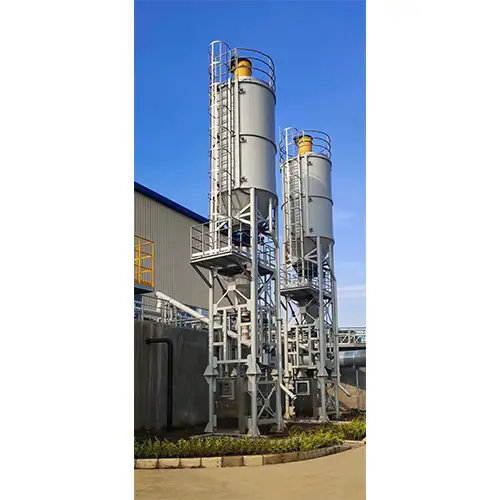What Is a Lime Bin?
Ott 18, 2024
Lime bins play a crucial role in the storage and handling of lime, an essential material in many industrial processes. This new explores what lime bins are, their primary uses, design standards, materials of construction, capacity ranges, and how they operate. Okay, let’s explore!
A lime bin is a storage facility designed specifically for holding lime, a dry powder produced from limestone through calcination. These bins are engineered to facilitate easy access and efficient handling of lime, ensuring that the material remains dry and uncontaminated.

Primary Uses of Lime Bins:
Lime bins serve multiple purposes across various industries. They are primarily used in water treatment plants for pH adjustment, in construction for cement production, and in agriculture for soil stabilization and conditioning. Their ability to store lime securely makes them essential for maintaining operational efficiency in these sectors.
Design Standards:
The design standards for lime bins typically include considerations for structural integrity, safety, and ease of maintenance. Bins are designed to handle the weight of the stored lime and to prevent dust emissions. Standard guidelines often require compliance with local regulations and industry best practices to ensure safety and efficiency.
Materials of Construction:
Lime bins are commonly constructed from durable materials such as stainless steel, carbon steel, or reinforced concrete. The choice of material depends on factors like the operating environment, the need for corrosion resistance, and the specific requirements of the industry in which the bin will be used.
Capacity Ranges:
The capacity of lime bins can vary significantly, typically ranging from a few cubic meters for smaller applications to several hundred cubic meters for large-scale operations. The capacity chosen usually depends on the volume of lime required for production processes and the storage space available.
Working Principle:
The working principle of a lime bin involves the controlled storage and dispensing of lime. Lime is loaded into the bin, where it is kept dry and protected from environmental factors. When needed, lime is extracted from the bottom of the bin using a discharge mechanism, often aided by gravity or mechanical systems, ensuring a steady supply for ongoing processes.
Conclusion:
Lime bins are essential storage solutions that facilitate the efficient handling of lime across various industries. Understanding their design, materials, capacities, and operational principles helps organizations optimize their processes and ensure the effective use of this vital material. As industries continue to evolve, lime bins will remain integral to ensuring productivity and safety in lime handling.
Jingjin is a renowned lime bin manufacturer, specializing in high-quality storage solutions for lime used in various applications. With a focus on durability and efficiency, Jingjin’s industrial lime bins are designed to withstand harsh conditions while providing optimal protection for stored materials. Their expertise in manufacturing ensures that clients receive reliable and robust bins tailored to meet the specific needs of their operations, enhancing productivity in industries such as construction, water treatment, and agriculture.
